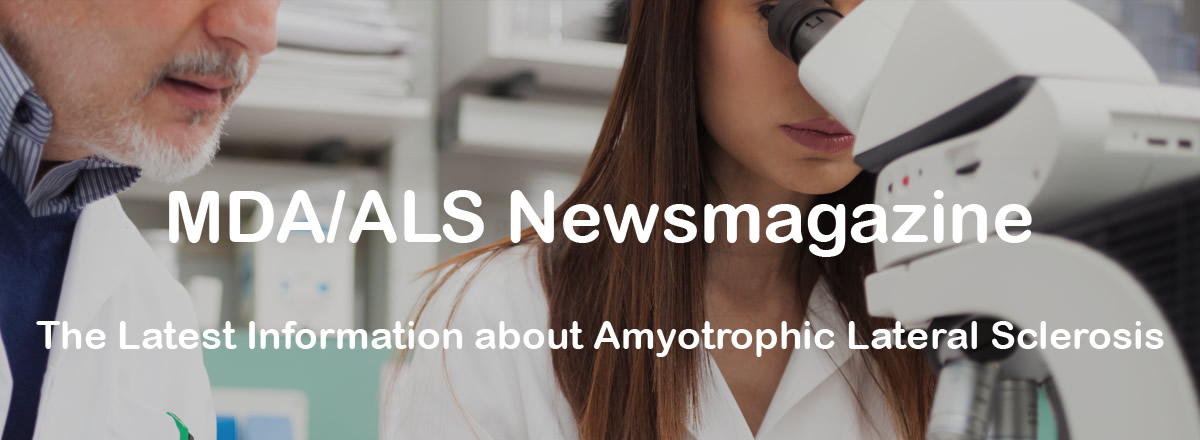
SOD1 Versus Other ALS: Apples and Oranges?

New research suggests non-SOD1 familial ALS and sporadic ALS may share common features — but that SOD1 familial ALS may be different
Scientists at Northwestern University Feinberg School of Medicine in Chicago have announced new findings showing some forms of familial and nonfamilial ("sporadic") amyotrophic lateral sclerosis (ALS) have commonalities at the molecular level — but that one form of familial ALS may be different.
Study investigators interpret the finding to mean that the form of ALS that results from mutated SOD1 genes is fundamentally different from other forms of ALS — and therefore that the commonly used research mice with SOD1-related ALS may not be good models of the type of disease that affects the vast majority of human patients.
At least one ALS expert, however, disagrees with this interpretation and believes all forms of the disease possibly share significant commonalities.
About ALS molecular mechanisms
ALS is a disease in which motor neurons, nerve cells in the brain and spinal cord that control voluntary muscle movement, die, causing progressive paralysis and usually death within a few years.
About 10 percent of the time, ALS is familial, showing a clear family history, and results from any of a number of defects in several known and some as-yet-unrecognized genes. The other 90 percent of the time, the cause of ALS is unknown, and the disease occurs without any family history ("sporadically").
The overt signs and symptoms of ALS look the same, whether or not the disease is caused by a genetic mutation. In addition, protein-containing "inclusions" (small clumps) and "aggregates" (larger clumps) in the motor neurons are a common finding in rodents and in people with all types of ALS. Aggregates are believed to be protective, formed by ALS-affected cells to "wall off" dangerous molecules.
Mutations in the SOD1 gene cause about 1 percent to 3 percent of human ALS cases but are the most commonly studied rodent "model" of the disease. There are other familial ALS rodent models, such as mice with mutated TDP43 genes. The TDP43 mouse is now the subject of intense study in the ALS research community.
However, there is no rodent model of sporadic ALS. The cause of this condition is unknown and therefore can't be induced in an animal.
About the new findings
The Northwestern investigators, coordinated by Han-Xiang Deng, published their findings online April 14, 2010, in Annals of Neurology.
Building on recent findings that mutations in the FUS gene are one cause of familial ALS, the researchers set out to explore the fate of the FUS protein, made from the FUS gene, in the motor neurons of people with various types of ALS.
They examined spinal cord motor neurons taken from autopsy samples of 78 people with ALS, of which 52 had the usual type of sporadic ALS, 16 had various types of familial ALS, and 10 had ALS with dementia (severe cognitive impairment).
They found FUS protein in inclusions in motor neurons in all the samples taken from people who had sporadic or familial ALS except those who had SOD1-related ALS. Samples from people with SOD1 ALS did not have FUS protein molecules.
The findings parallel those concerning the TDP43 gene and protein. Like mutations in the FUS gene, mutations in the TDP43 gene can cause familial ALS in humans and an ALS-like disease in mice. And, as with the FUS protein, TDP43 protein shows up in inclusions in the motor neurons of people with sporadic ALS, ALS with dementia, and non-SOD1-related familial ALS, but not in inclusions from patients with SOD1-related familial ALS.
"These data suggest that the pathogenic [disease-causing] pathway of mutant SOD1-mediated ALS is largely independent from other forms of ALS, including mutant FUS-linked ALS," the researchers say in their paper.
They also note that the presence of both FUS and TDP43 protein molecules in ALS-affected spinal motor neurons may indicate that these proteins interact with other cellular components and may provide a "common theme in motor neuron degeneration in most, if not all, SOD1-negative [non-SOD1] forms of ALS."
They say investigation of a possible common pathway indicated by the similar pattern of involvement of these two proteins may "offer a novel avenue for developing therapies for most forms of ALS."
The study team included former MDA research grantee Teepu Siddique, a professor of neurology and of cell and molecular biology at Northwestern, and Robert Sufit, a professor of Neurology at Northwestern and a current MDA clinic director at that institution.
Meaning for people with ALS
The findings may provide evidence that SOD1-related ALS is different from other forms of ALS and may undermine to some extent the use of the SOD1 research mouse as a model of the human disease.
However, that isn't necessarily the case, says neurologist Stanley Appel, a long-time MDA research grantee who heads MDA's Medical Advisory Committee and directs the MDA/ALS Center at Methodist Neurological Institute in Houston.
Although there may be different varieties of ALS "apples," there's not sufficient evidence so far to single out SOD1-related ALS as an "orange," Appel says.
In familial ALS, mutations in various genes, including SOD1, FUS and TDP43, may initiate different alterations in nerve cells, he says. However, "downstream" of either these mutations or other fundamental and unknown disease causes, the disease appears to progress in similar ways, he notes.
In sporadic ALS, Appel says, a process called "oxidative damage" may cause proteins to misfold, causing similar toxicity to the misshapen proteins that result from genetic mutations.
In summary, the new findings add to the ongoing debate about whether or not ALS is one disease with many causes, or many diseases with many causes — whether it's many types of apples, or apples and oranges.
If the former is the case, then the widely used SOD1 research mouse and other animal models of familial ALS, such as the TDP43 mouse, should be useful in predicting the responses of humans with sporadic ALS to a variety of interventions.
If the latter is the case, then the SOD1 research mouse and perhaps other animal models of familial ALS may not be good predictors of how humans, the overwhelming majority of whom have sporadic ALS, will respond to treatments.